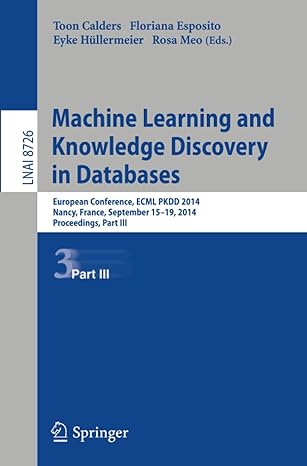Answered step by step
Verified Expert Solution
Question
1 Approved Answer
from dateutil import parser from dateutil import tz import datetime import pytz def daytime ( time , daycycle ) : Returns True
from dateutil import parser
from dateutil import tz
import datetime
import pytz
def daytimetimedaycycle:
Returns True if the time takes place during the day, False otherwise and
returns None if a key does not exist in the dictionary
A time is during the day if it is after sunrise but before sunset, as
indicated by the daycycle dictionary.
A daycycle dictionary has keys for several years as strings The value for
each year is also a dictionary, taking strings of the form mmdd The
value for that key is a THIRD dictionary, with two keys "sunrise" and
"sunset". The value for each of those two keys is a string in hour
time format.
For example, here is what part of a daycycle dictionary might look like:
:
:
"sunrise": :
"sunset": :
:
"sunrise": :
"sunset": :
In addition, the daycycle dictionary has a key 'timezone' that expresses the
timezone as a string. This function uses that timezone when constructing
datetime objects using data from the daycycle dictionary. Also, if the time
parameter does not have a timezone, we assume that it is in the same timezone
as the daycycle dictionary.
Parameter time: The time to check
Precondition: time is a datetime object
Parameter daycycle: The daycycle dictionary
Precondition: daycycle is a valid daycycle dictionary, as described above
# HINT: Use the code from the previous exercise to get sunset AND sunrise
# Add a timezone to time if one is missing the one from the daycycle
# Add timezone to time if one is missing
year strtimeyear
if year in daycycle:
monthday :d:dformattimemonth, time.day
if monthday in daycycleyear:
sunrise daycycleyearmonthdaysunrise
sunset daycycleyearmonthdaysunset
sunrisetime datetime.datetime.strptimesunriseH:Mtime
sunsettime datetime.datetime.strptimesunsetH:Mtime
return sunrisetime time.time sunsettime
return None Error:"The call daytimedatetimedatetime tzinfodaycycle returns False, not True."Implement daytime
Read the specification of the function daytime in the module funcs.
Implement this function according to its specification.
This function is very similar to from the previous exercise, except
that it now asks you to determine whether a datetime object is between
sunrise and sunset eg happened during the day That means you will
need to extract both the sunrise and sunset this time and compare them
to given time value.
Note that the value may or may not have a time zone attached to it
If it has a time zone attached, you must give both sunrise and sunset a
time zone in order to be able to compare them. The time zone is stored in
the daycycle dictionary using the key "timezone" that value is a string If
does not have a time zone, you can assume it has the same time
zone as sunrise and sunset.
When you have implemented the function, test your answer with the test
script. You should now pass all tests.
Check the Function
You may run this test multiple times.
LAST RUN on :: PM
The call daytimedatetimedatetime tzinfo

Step by Step Solution
There are 3 Steps involved in it
Step: 1

Get Instant Access to Expert-Tailored Solutions
See step-by-step solutions with expert insights and AI powered tools for academic success
Step: 2

Step: 3

Ace Your Homework with AI
Get the answers you need in no time with our AI-driven, step-by-step assistance
Get Started


